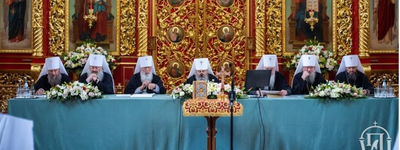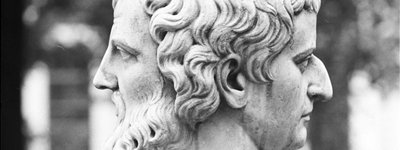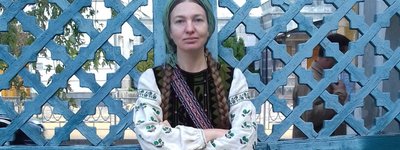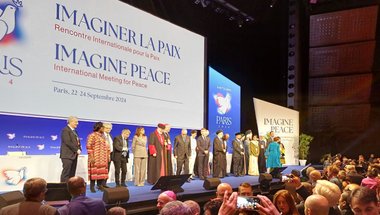The crisis state in Ukrainian Orthodoxy: trends, challenges and possible ways of overcoming

The situation in contemporary Ukrainian Orthodoxy can be characterised as a kind of "newborn crisis". It is an intermediate period between the "intrauterine" and "extrauterine" way of life, a transition to a new form of life, when many "physiological systems" begin to function anew, causing a kind of "crisis".
But there is also an existing crisis in world orthodoxy superimposed here. The unjustifiably prolonged period of "stagnation" in world Orthodoxy ended after the 2016 Pan-Orthodox Council. Not least of all, the events in Ukraine served as a catalyst.
When starting to talk about the situation in Ukrainian Orthodoxy, it is necessary to take into account that in addition to the problem of divisions, the Soviet-Sergian heritage has a special imprint on it. All Orthodox jurisdictions currently operating in Ukraine in one way or another succeed the "Soviet Orthodoxy", with all its negative and positive qualities. Born to the generation from the USSR, they have never fully escaped from this spiritually damaged state. And although the flags and slogans have long since been changed, the inner essence often remains the same.
The ageing Soviet church system, which had long since survived the death of the USSR, went from a state of stagnation to a stage of deep crisis, characteristic not only of Moscow but also of Kyiv. However, the latter has a chance to emerge from it in a new capacity.
According to the classical definition, crisis manifests hidden conflicts and disproportions. It is a fracture - a state in which the existing means of achieving goals become inadequate, resulting in unpredictable situations. But a crisis is also a solution, an coup, a turning point [1].
In this respect, a crisis is a good thing; it is always followed by change after stagnation. Either death or a new birth. The old must die, the new must be born. Nowadays we are witnessing both.
Childbirth is always painful and even a little messy. It is a natural process. So we should not deceived that this labour could have been easy, pleasant and clean. What is important is how the so-called "newborn crisis" can be overcome in the transition to a new form of life.
In this report we will deliberately put more emphasis on the problematic aspects of the activity and condition of Ukrainian churches, so that it will be easier to determine the correct “diagnosis” and possible ways to overcome the existing “diseases”. This does not mean that there are no positive trends in Ukrainian Orthodoxy. There are definitely some, and quite a few, but we will talk about this another time. Sometimes it is useful to take a critical look at ourselves. This is usually the first step to healing.
Ukrainian Orthodoxy: competition and contradictions
Before we start talking about the current state of Ukrainian Orthodoxy and possible ways of its development, it is necessary to briefly delve into the prehistory of the existing problems in it.
To date, Orthodoxy in Ukraine continues to be in a state of disharmony (a kind of “turbulence zone”). It is very heterogeneous and fragmented. The 2018 Unification Council (Sobor) of the Ukrainian Orthodox Church of Kyiv Patriarchate (UOC-KP), the Ukrainian Autocephalous Orthodox Church (UAOC), and a group of clergy led by two metropolitans of the Ukrainian Orthodox Church (Moscow Patriarchate), their unification into a single Orthodox Church of Ukraine (OCU) and the granting of the tomos of autocephaly by the Ecumenical Patriarchate marked the beginning of a new page in the history of Ukrainian Orthodoxy. But it did not solve all the existing problems and contradictions. The main one is the ongoing division into the autocephalous Orthodox Church of Ukraine (OCU) and the Ukrainian Church (UOC) in unity with the Russian Orthodox Church of the Moscow Patriarchate (ROC MP).
Until recently, the UOC (in unity with the Moscow Patriarchate), as a direct heir to the Soviet-era ROC Exarchate in Ukraine, retained a strong primacy and support of the post-Soviet power and oligarchic elites in Ukraine. As of the end of 2019, it consisted of 12,338 parishes [2]. With the help of administrative resources, for many years it maintained a de facto monopoly position in most regions of the country (especially in the eastern, southern and central regions), while often being a conduit of pro-Russian narratives and influence among Ukrainian believers. The Ukrainian Autocephalous Orthodox Church (UAOC) and the Ukrainian Orthodox Church of Kyiv Patriarchate (UOC-KP), which emerged in Ukraine with the fall of the communist regime, have been discriminated against the UOC (MP) for more than 25 years of Ukraine's independence, which laid the ground for future conflicts (the very preconditions and reasons for such confrontation were laid during the communist regime, when the structures of the Ukrainian Autocephalous Orthodox Church, the Ukrainian Greek Catholic Church, the Patriarchates of Constantinople and Romania, the True Orthodox (Catacomb) Church, etc., alternative to the ROC-MP were liquidated in Ukraine through brutal repressions). д., most of whose priests were repressed or shot, and their parishes and churches were forcibly joined to the ROC-MP, thanks to which its monopoly position as a single (regime-controlled) Orthodox structure was artificially ensured in the USSR).
For a long time, the old post-Soviet elites in Ukraine continued to favour the Church of the Moscow Patriarchate (i.e. the UOC) out of habit. The situation began to change significantly after 2014, when the Russian Federation annexed Crimea and unleashed a war in Donbass.
In the conditions of war and Russia's seizure of part of the Ukrainian territories, Ukrainian society has increased the demand to prevent the influence of the Moscow Patriarchate in Ukraine, through whose church structures pro-Russian propaganda has been conducted in the country for many years. The most scandalous example is the infiltration into Ukraine of a subversive group led by retired FSB colonel I. Girkin (Strelkov), who led the coordination of the operation for the annexation of Crimea and unleashed hostilities in Donbas, which was carried out through the ROC connection with the UOC.
Since then, this issue has ceased to be simply an internal matter of the church, as it was before, but has come to be viewed through the prism of the national security of the state. Unfortunately, the leadership of the UOC in this situation did not draw conclusions, could not get rid of dependence on Moscow and stop its influence among the episcopate, clergy and believers. Because of this, in the conditions of Russia's hybrid war against Ukraine, the initiatives of the Ukrainian authorities to ensure spiritual independence from Moscow, to unite Ukrainian Orthodoxy and to proclaim the autocephaly of the Ukrainian Church have become a serious challenge for the UOC. The UOC leadership, listening to the recommendations of the Moscow Patriarchate, refused to participate in the dialogue on this issue, hoping that by doing so it would be possible to disrupt and block the process itself. However, this position only led to the fact that the process went on without the participation of the UOC and eventually turned out to have unfavourable consequences for the UOC itself.
As a result, in 2018 the unification of the UOC-KP (5,363 congregations), UAOC (1,171 congregations) and a group of clergy headed by two metropolitans of the Ukrainian Orthodox Church (Moscow Patriarchate) into a single Orthodox Church of Ukraine (PCU) was achieved. It was canonically recognised as an autocephalous church by the Ecumenical Patriarchate and a number of other Local Churches, which was achieved without the participation of the leadership and the majority of bishops of the UOC (MP).
The leadership of the UOC, having rejected proposals for separation from the MP, followed the latter in breaking eucharistic unity with the Ecumenical Patriarchate and other local churches that recognised the autocephaly of the OCU, and turned to confrontational rhetoric. In fact, the actions of the Moscow Patriarchate aggravated the church schism not only in Ukraine, but also in world Orthodoxy. In turn, these events contributed to a new round of intra-church controversies in Ukraine. Many UOC priests and faithful, who disagreed with the course of their leadership and did not want to remain within the MP, began to move to the OCU. From the end of 2018 to January 2022, about 700 parishes moved from the UOC to the OCU [3]. Thus, the number of OCU parishes as of January 2022 was already around 7,000, becoming a serious competitor to the UOC [4].
The UOC tried to challenge every accession of communities to the OCU in the courts, claiming that their rights had been violated. However, the stay of the UOC under the jurisdiction of the ROC MP and the pro-Moscow sentiments of a number of UOC figures against the background of Russia's annexation of Crimea and the war in Donbas contributed to a further strengthening of negative public attitudes towards the activities of the Moscow Patriarchate in Ukraine. At times this has led to conflicts and physical clashes between supporters of both jurisdictions in certain localities and numerous legal battles over church properties.
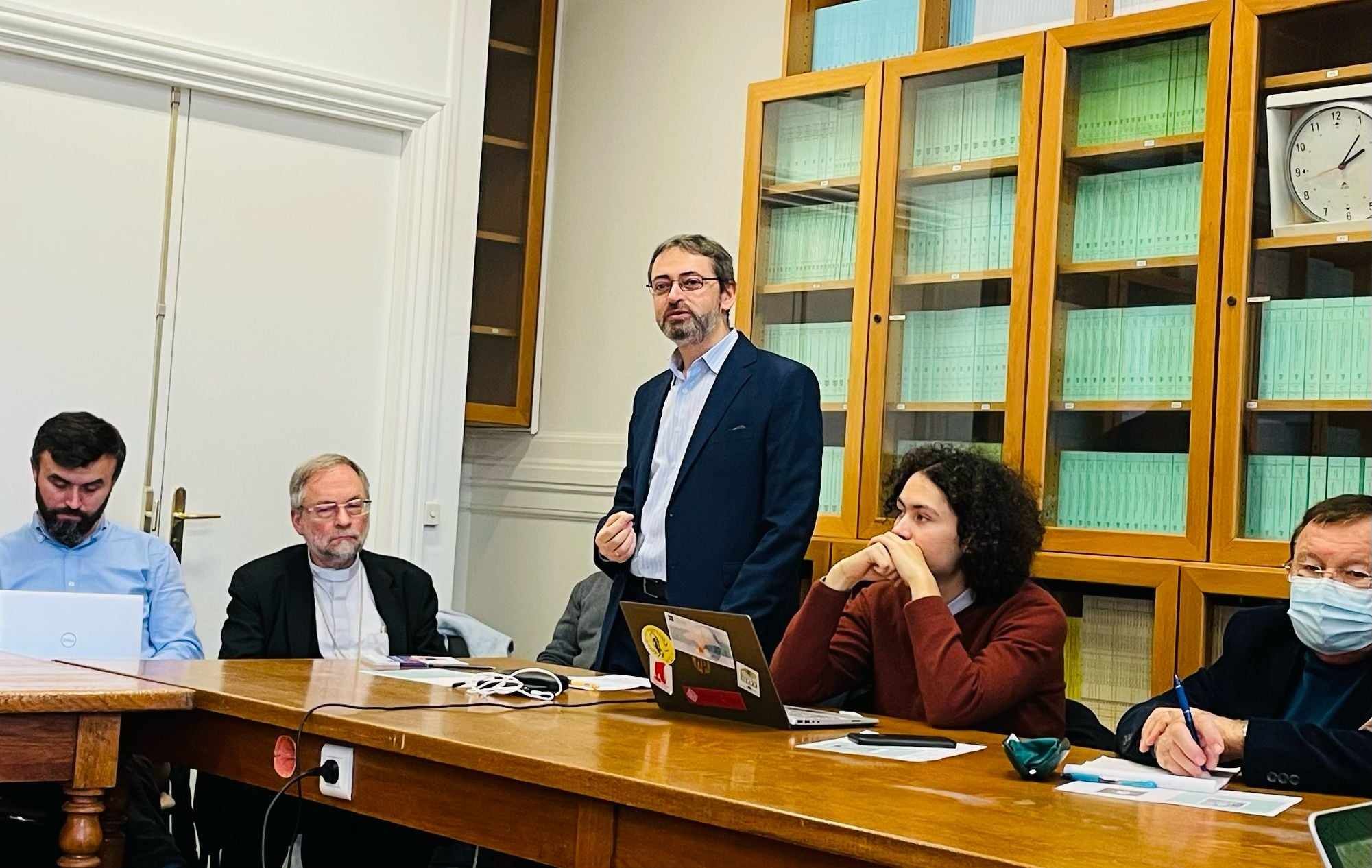
The situation in the UOC after February 2022
The full-scale military invasion of Ukraine by the Russian Federation in February 2022 and the attempt to occupy its territory have dramatically affected the ecclesiastical situation in the country. The very invasion of the Russian army by its head V. Putin justified, among other things, the need to ensure the protection of UOC (MP) structures in Ukraine. This was openly stated by the leader of the aggressor country three days before the full-scale attack began [5]. The ROC MP leadership headed by Moscow Patriarch Kirill (Gundyaev) unconditionally supported Russia's war against Ukraine. Patriarch Kirill not only blessed the military invasion, but also began to lay religious and ideological justification and justification of the war and the crimes of the occupying army of the Russian Federation on the territory of Ukraine [6].
Naturally, in this situation, Ukrainian society has become even more negative towards everything connected with Russia, including the presence of overt or covert structures of the Moscow Patriarchate in Ukraine [7]. The war exacerbated both the confrontation between the two Orthodox jurisdictions (UOC and OCU) and the contradictions and "fermentations" within the UOC itself.
Already from the first days of the full-scale Russian invasion inside the UOC, many priests, in protest against the actions of Moscow Patriarch Kirill, began to stop commemorating his name in worship services. The so-called "signatories" movement spontaneously emerged among the ordinary Ukrainian clergy. The ferment spread throughout the UOC. As a reaction to these events, an extraordinary Council (Sobor) of the UOC was convened in May 2022 in the village of Theophany near Kyiv.
Many priests and believers expected that the Council would adopt an act of withdrawal of the UOC from the ROC MP and proclaim its autocephaly. However, Metropolitan Onuphrius and the episcopate did not go for it. They limited themselves to half-hearted decisions that allowed them to preserve the former status of the UOC as a self-governing part of the ROC, while the very belonging of the UOC to the ROC was carefully veiled. In particular, the Council adopted a new version of the "Statute on the Management of the UOC", where inconvenient references to the UOC belonging to the ROC in the conditions of war were cleaned up [8]. At the same time, the Charter retained the norm (paragraph 1) regulating the status of the UOC on the basis of the 1990 Diploma of Moscow Patriarch Alexy (Ridiger) on the self-government of the UOC within the ROC, which unambiguously stipulated that the UOC retains its connection with world Orthodoxy through the ROC [9].
The Council in the village of Theophany, although it blessed to stop commemorating the Moscow patriarch in divine services, it did not make a single decision that the UOC withdraws from the ROC and the hierarchs from its governing bodies (Synod, Bishops' and Local Councils (Sobor), Inter-Soboral Presence, Synodal Commissions of the ROC MP, etc.). Nor did the Council unequivocally condemn the actions of Moscow Patriarch Kirill (Gundyaev) and other top ROC hierarchs in connection with their support and blessing of Russia's war against Ukraine, as well as the quasi-religious ideology of "Russian world" preached by them [10]. Instead, the Council very timidly and inarticulately expressed only "disagreement with the position of Patriarch Kirill of Moscow and All Russia regarding the war in Ukraine" (paragraph 3) [11].
Further events during 2022-2023 showed that the leadership of the UOC in the conditions of war, unfortunately, is not going to change anything. The final withdrawal of the UOC from the ROC MP did not take place. This, in turn, further aggravated the war-torn situation, actualising the public demand for a complete ban on political, social, commercial and cultural organisations, as well as church organisations, which are in one way or another connected with their centres in the aggressor state (Russian Federation).
Since the leadership of the UOC has been trying to maintain unity with Moscow at all costs during the last 30 years of Ukraine's state independence, this love of the highest hierarchs for the Moscow Patriarchate has turned into an irreversible catastrophe for them and for the entire UOC under the new conditions.
First of all, the wait-and-see tactics chosen by the UOC leadership and ‘confusing the traces’ (concealment of canonical ties with the ROC MP instead of real and complete withdrawal from its membership) did not play in favour of the UOC itself, provoking serious fermentation and discontent within this jurisdiction itself. Many dissenting priests and believers began to defect to the OCU. According to official figures, during the war, between February 2022 and 1 December 2023, 924 religious communities transferred from the UOC to the OCU [12]. The UOC considers such facts of transitions illegal, challenging them both in court and resisting attempts to occupy the churches. All of this has intensified the conflicts and struggle between the followers of the two Orthodox jurisdictions for church property and spheres of influence. In some regions there are known cases of forceful seizure of churches. The most resonant were incidents in Ivano-Frankivsk and Cherkassy, which were condemned even by OCU representatives [13]. The Moscow Patriarchate, pro-Russian lobbying organisations and the media are trying to present the existing conflict between the two Orthodox jurisdictions as a "persecution of religion" in Ukraine. In fact, in the conditions of the war against Ukraine, they are trying to create a negative image of the country in the face of the international democratic community, which looks, among other things, like helping to justify Russia's military aggression against the Ukrainian state.
The "signatories" movement, which spontaneously emerged within the UOC and which in 2022 advocated full autocephaly of the UOC, by the beginning of 2023 gradually turned from a certain ecclesiastical vanguard, which influenced the convening of the Council Council in the village of Theophany, into an opposition movement. A kind of manifesto of the movement was the Address to the Synod of the UOC for January 2023, better known as "10 questions of clergy and believers to the Synod of the UOC" [14]. It was signed by about 300 priests and more than 1,000 UOC laity [15]. The main theses of the appeal were the need for the Synod to take concrete decisions on the complete withdrawal of the UOC from the ROC MP and its governing bodies. Metropolitan Onufriy and the Synod of the UOC never responded to this appeal [16]. Instead, some of the most active participants of the "signatories" movement (Fr A. Pinchuk, Fr A. Kolb and others) were subjected to exemplary ecclesiastical interdicts in the UOC. Others were threatened with chastisement if they did not calm down. Through intra-church persecution, intimidation and pressure, attempts were made to marginalise and suspend the movement so that it would not embrace the entire UOC.
At the same time, cases of collaborationism among UOC hierarchs and priests became more frequent in the occupied territories. As of the beginning of 2024, a number of dioceses of the UOC have passed into direct subordination to the Moscow Patriarch (Simferopol, Dzhankoy, Feodosia and Rovenkov dioceses, as well as the left-bank so-called "Skadov" part of the Kherson diocese and part of the Zaporozhye diocese) [17]. At the same time, such cases were not condemned in any way by the UOC Synod. On the contrary, Metropolitan Onuphrius stated that UOC hierarchs and priests in the occupied territories "are not collaborators, but real heroes" [18].
On the other hand, in the Ukrainian territories occupied by Russian troops, cases of repression against clergy and believers of the OCU, UGCC and other denominations who do not wish to join the Moscow Patriarchate have become more frequent. The most resonant case occurred in the beginning of 2024 in the Kherson region, when the Russian occupants brutally tortured to death a OCU priest Fr Stepan Podolchak, who was arrested by them [19].
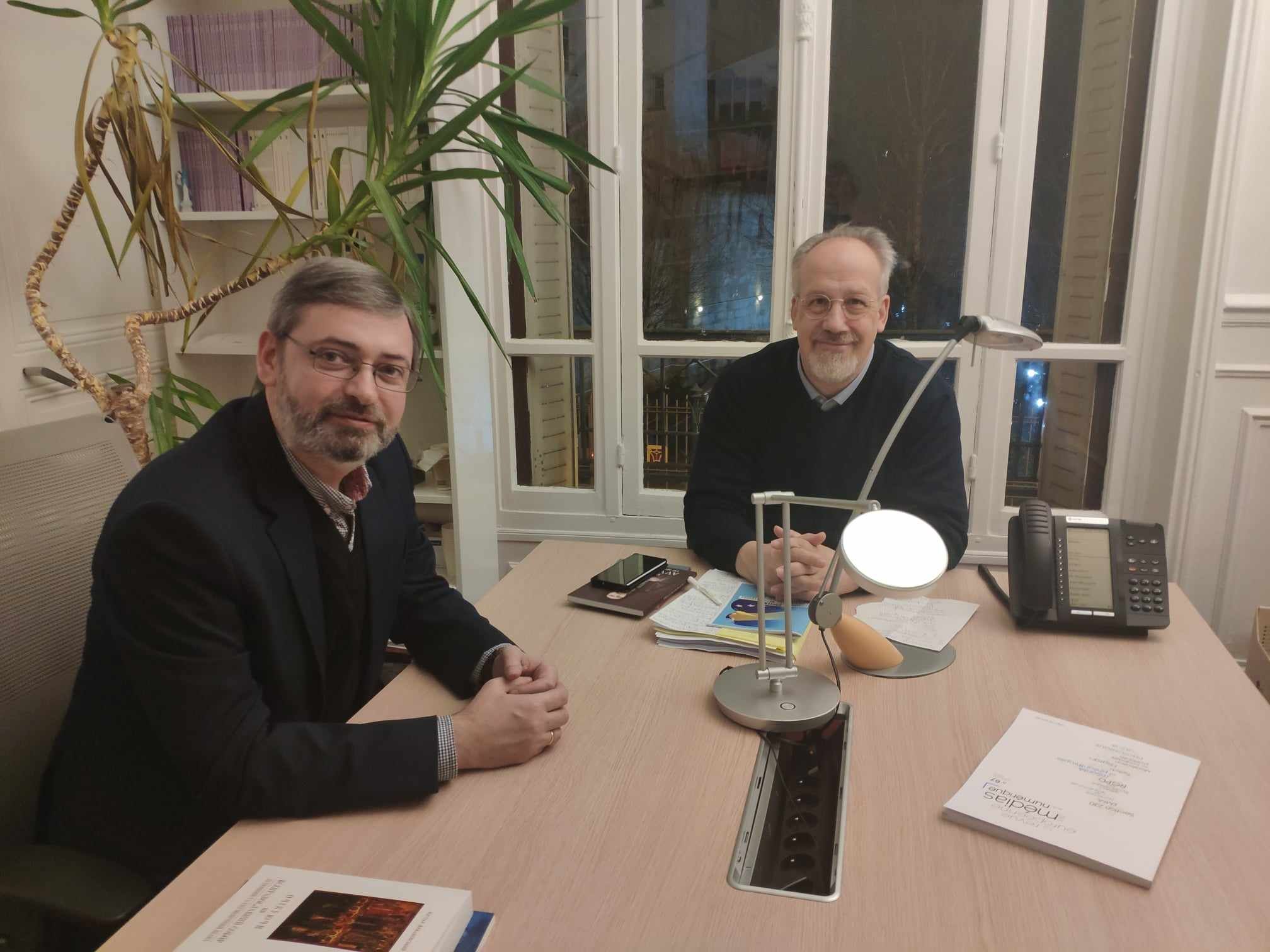
Public Feeling and the Reaction of the Government
The existence of Moscow Patriarchate structures in Ukraine under the conditions of war began to be viewed through the prism of countering Russian aggression and ensuring national security. Especially since through the church in Ukraine the Moscow Patriarchate has repeatedly tried to spread the ideas of Russian imperialism and fundamentalism, propagate the so-called ‘Russian world’, deny the validity of the Ukrainian language, spread separatist sentiments, etc. (in particular, in Crimea and Donbas).
The church problematic has acquired a pronounced political colouring, leading to new contradictions in society.
If before Russia's annexation of Crimea and its war in Donbas the UOC was the largest church structure in Ukraine, after 2014 the situation changed dramatically.
Social surveys conducted by the Razumkov Centre show that the number of citizens who identify themselves as UOC has been steadily decreasing during 2010-2018 (from 24% in 2010 to 12% in 2018), while the number of UOC-KP supporters, on the contrary, has been growing: from 15% in 2010 to 29% in 2018). After the start of Russia's full-scale war against Ukraine, there were significantly fewer citizens who identify themselves as UOC (from 13% in 2021 to 6% in 2023), but there were more of those who identify themselves as OCU (in 2023 - up to 42% of all respondents identify themselves as OCU) [20].
These statistics, although they do not reflect the full picture of the actual number of parishioners in a particular jurisdiction, nevertheless show the emerging trends and preferences in society.
UOC (in unity with the MP), which until 2014 united more than 12 thousand parishes and priests, is gradually losing its positions. According to official data, from the end of 2018 to 2023, more than 1.5 thousand congregations moved from the UOC to the OCU [21]. Of these, 924 communities changed jurisdiction between 2022 and 2023 [22].
If we take into account that the Synod of the UOC no longer controls the situation in the dioceses in the occupied territories, the real number of parishes controlled by the UOC in the Ukrainian-controlled territories is now just over 9,000 parishes. And since the OCU currently has about 8,000 registered religious communities [23], the forces of both jurisdictions are almost at parity in terms of the number of parishes. Whereas society's sympathies have not been on the side of the UOC for a long time.
Social surveys conducted at the end of 2023 show that 71% of respondents support banning the activities of religious organisations whose governing centre is located in a state that has committed military aggression against Ukraine. At the same time, 55.5% are of the opinion that the activities of UOC (MP) in Ukraine should be banned [24].
In the conditions of the war, the policy of the state authorities also undergoes a change. If during 2022 the attitude to the UOC on the part of the authorities remained more or less loyal or tolerant (which was largely due to expectations of further steps of the UOC leadership towards a complete break with the ROC MP), then from the beginning of 2023, under the influence of the mood in society, this attitude is changing to the opposite. Criminal cases are initiated against a number of UOC hierarchs and priests on charges of collaboration and incitement to religious hatred. Several priests whose guilt of treason was proven were exchanged for Ukrainian prisoners of war and handed over to the Russian side. Lease agreements for a number of objects of spiritual and cultural significance, in particular the Kyiv-Pechersk Lavra, were suspended.
A serious challenge for the UOC was the adoption by the Verkhovna Rada (Parliament of Ukraine) 19 October 2023 of the draft law No. 8371 as a basis for the first reading [25] (at the time this report was announced in January 2024, the law had not yet been finalised – ed.). This project is sometimes referred to as the "Law about banning the UOC". However, this is incorrect. There are many questions to it. But the draft law itself does not say a word about UOC. It only talks about religious organisations affiliated with centres in the aggressor state (Russian Federation). Therefore, if the UOC Synod adopts an official act stating that the UOC has completely withdrawn from the ROC MP, this bill cannot apply to it. As the authors themselves explained, their bill is not aimed at banning the UOC, but at ending its dependence on Moscow [26]. In fact, the bill encourages the leadership of the UOC to adopt the necessary official documents on the complete withdrawal of the UOC from the ROC MP and the severance of administrative and canonical relations with it. So that it becomes not only in words, but also in deeds fully independent from religious centres in the aggressor state.
The future of the UOC and the possibility of co-existence of several Orthodox jurisdictions
It is wrong to think that it is possible to liquidate the UOC by administrative intervention or pressure from the authorities, as some hotheads call for it. This approach is unconstructive and wrong. It is necessary to look for other ways and methods of solving the accumulated problems. In particular, by stimulating dialogue. It is necessary to support the pro-Ukrainian wing among the UOC. It is necessary to help this Church to stop being a carrier of Russian ideas and traditions, so that it too becomes a Church of Ukrainian tradition.
It is important to realise that this is a Church to which Ukrainians also belong. Among them there are quite a few who are Russian-speaking or even pro-Russian. UOC is a rather heterogeneous and diverse church community, with its own peculiarities, traditions and differences. For 30 years UOC has developed its own religious subculture and a kind of "identity", with certain differences in mentality and perception of everything going on around. There are also many stereotypes, brought up under the influence of Russian narratives.
Among the more than 9,000 priests of the UOC there are different moods, sometimes quite opposite. There is a strongly pro-Ukrainian wing of the clergy there. There are a lot of such priests there. But they do not yet have a recognised spiritual leader and their movement has not yet taken clear-cut shape. Ambiguous tendencies are also manifested among the UOC episcopate. The informal bishops' meeting, which took place on 28 July 2023 in Kyiv-Pechersk Lavra, was indicative in this respect. At this meeting about a dozen bishops tried, albeit unsuccessfully, to raise the issue of the need to take more consistent and real steps to separate the UOC from the ROC [27].
At the same time, the UOC retains the influence of a rather strong pro-Moscow wing, which includes both priests and some influential hierarchs. And there is a third so-called "current", which can be conventionally defined as the "Onufriyevites". They are devoted to their spiritual leader Metropolitan Onufry, they are neither pro-Ukrainian nor pro-Moscow, whatever course their leader takes, they will follow him. This is a rather conservative environment, sometimes even inclined to "zealots" and fundamentalism. They tend to have a negative attitude towards ecumenism, modernism and liberalism in the Church. Mentally, they are somewhat closer to the followers of the old ROCOR and the Greek Old Calendarists in a number of characteristics (as did Metropolitan Onuphrius himself).
Under the conditions of Russian military aggression, which is supported and blessed by the leadership of the ROC MP, the need for a complete withdrawal of the UOC from its membership has become more urgent. There is no other perspective or alternative to it. All autocephalous Local Orthodox Churches without exception have passed through such a path at different times. Not only the Ukrainian authorities and society, but also a significant number of priests and believers of the UOC itself insist on such a demand. However, the heterogeneity and diversity of sentiments within this jurisdiction makes it hostage to the associated inertia, or rather inability to make adequate decisions in response to the current challenges of the time. This situation exacerbates internal contradictions and crisis. Openly pro-Moscow and pro-Ukrainian forces within the UOC cannot co-exist together any longer. There is a probability that if a decision is made to completely withdraw the UOC from the ROC MP, the pro-Moscow forces (represented by a group of influential hierarchs of the UOC) will not recognise such a decision and will arrange a split. At the same time, the UOC leadership's policy of waiting and maintaining the status of a canonical structural subdivision of the ROC MP in Ukraine leads to an exodus of Ukrainian clergy and believers and deepens the gulf in relations with society and the state. In an attempt to keep the Moscow-backed forces from splitting, the UOC is gradually losing Ukrainian parishes and flock who do not want to have even the slightest ties with the ROC-MP. The tactics chosen by the leadership of the UOC of ‘sitting on two chairs’ and striving to please all existing currents does not give the desired result. In conditions of war, moods and views polarise and it becomes impossible (and even dangerous) to keep together what is incompatible.
It is not excluded that in the heterogeneous environment of the UOC a split into several separate currents may occur. There are prerequisites for this, and the internal contradictions between them are growing. It would not be unexpected if on the basis of the existing contradictions and gradual estrangement from the Moscow Patriarchate, for example, a group would separate from the UOC and form the so-called ‘Church of Russian Tradition’ in Ukraine (following the example of ROCOR).
At the same time, there is also a desire on the part of some clerics to separate themselves from the UOC (as a canonical part of the ROC MP), but at the same time not to join the OCU, to find for themselves an alternative solution to the problem in the form of the creation of parallel church structures in Ukraine under the temporary omophorion of the Constantinople, Romanian, Serbian patriarchates or the Polish Church.
Priests and believers, who for various reasons are not satisfied with either the UOC or the OCU, are thinking about alternative options. If the structure of the Ecumenical Patriarchate of Constantinople cannot become such an alternative for the transitional period, some people propose the idea that it could become a similar structure, for example, of the Romanian Patriarchate. There are such sentiments and scenarios too. The positive and negative aspects of this are yet to be assessed.
Such proposals are not in line with the principles of the canonical structure of most local Orthodox Churches, where it is accepted that only one autocephalous local Church should operate within one state. However, this principle is not always and not completely fulfilled, leaving opportunities for οἰκονομία and manoeuvres in individual churches (for example, in the north of Greece there are dioceses of the “New Lands”, which have double subordination – both to Constantinople and the Synod of the Hellenic Church in Athens; on the territory of Romania there is a separate Timisoara diocese of the Serbian Church headed by its own bishop, who has his seat in the Romanian city of Timisoara, while on the territory of Serbia the Romanian Patriarchate has its own diocese with its seat in the Serbian city of Vrsac; There are parallel dioceses of the Moscow and Romanian Patriarchates in Moldova; The situation is quite different in the USA and Western European countries, where different Orthodox jurisdictions peacefully coexist on the same territory).
In peaceful circumstances, healthy competition between churches would obviously not be a problem for the state. It might help to improve the quality of missionary service, internal changes and reforms in the churches themselves. However, under war conditions, one has to weigh whether calls for the establishment of new structures of other national churches in the country, apart from the purely canonical contradiction, could bring additional threats and challenges, especially in the border regions (in particular, regarding possible inter-ethnic conflicts and threats to the territorial integrity of the country).
It is obvious that for a secular democratic-legal state, where the Church is separated from the state and the state from the Church, the existing internal church-canonical restrictions cannot serve as a barrier to the operation of various Orthodox or any other jurisdictions in the country. The fact that there are several of them in Ukraine is not unlawful. Such precedents in the history of Orthodoxy are known in the period when it was not a state (imperial) religion [28]. In the “post-Constantine” era it looks natural, though not usual. The experience of development of Orthodoxy in democratic countries (USA and EU), where different Orthodox jurisdictions quietly operate on the same territory, testifies to the possibility of such a format for the Ukrainian state [29]. The main thing is that these jurisdictions peacefully coexist among themselves, do not conduct anti-state and anti-social activities, are not conductors of ideas aimed at confrontation with society, denial of sovereignty and territorial integrity of the state, were not a source of xenophobia and terrorism and were not associated with foreign centres that support aggression and war against the state and the people. The task of the state is to monitor the observance by religious organizations of the current legislation and to prevent such anti-state and illegal activities, as well as to promote dialogue between them, while the question of their possible unification into one jurisdiction is an internal matter of these churches themselves.
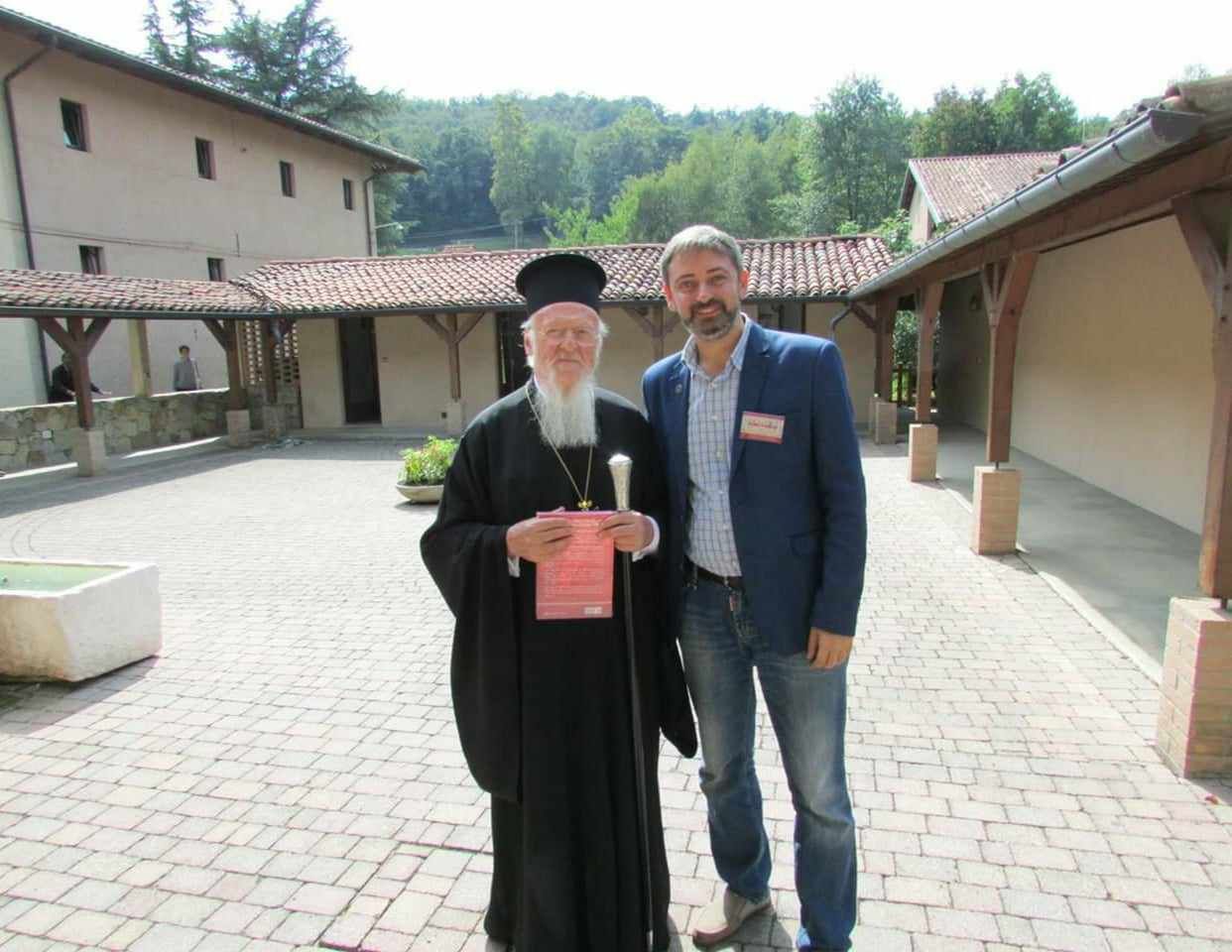
Post-Soviet heritage, the temptation to become a "state church" and property conflicts
The existing division of Ukrainian Orthodoxy is not the only problem. To a certain extent among the causes of internal “diseases” and a significant brake in its development remains the post-Soviet ecclesiastical heritage. It promotes a distorted view of the Church as an earthly institution, an administration or a political party. Among the bishops, clergy and believers of all Orthodox jurisdictions in Ukraine there is a widespread substitution of the understanding of the nature of the Church as the Mystical Body of Christ with purely earthly administrative institutions/jurisdictions, “measuring of sizes” and fighting for walls and property, not for souls. In other words, all things that are foreign to the Gospel. Jurisdictional corporate/party interests override spiritual interests. People are ready to defend their jurisdictions as some kind of corporations or parties, their temple buildings and property, not realising that the Church is actually – about something else entirely.
There is a subtle substitution of meaning and content. This is a serious problem and an obstacle to both dialogue and unity. The same diseases of the Sergian-Soviet heritage of spiritual emasculation and distortion are equally affecting all Ukrainian Churches (both the UOC and the OCU) without exception. Changing signage and jurisdictions alone does not eliminate these ills.
As for the OCU, it is not all that unambiguous either. Like the UOC, it came out of the "old vessels" of Soviet orthodoxy. This too has a negative impact on it. It too has its own marginal currents that seek to solve issues with radical methods not in the spirit of the Gospel. The temptation to switch places with MP, to take its once monopolistic place, to become "MP № 2" or some kind of "state church" cannot but cause concern.
Recently, for the first time in Ukraine the share of those in favour of introducing the institution of "state church" has increased, having equalised with the share of those against (37.5% and 38% respectively). The greatest number of supporters of this idea is among OCU followers (42%) [30]. This is a kind of test for the OCU for its strength and faithfulness to the evangelical foundations of Christianity.
The insufficiently deep level of reform within the church and the tendency to copy the traditions of the MP are a problem and a challenge for the OCU. Overlaid on this is the personnel problem - the lack of qualified priests and monastics, not always a sufficient level of their education and church consciousness, excessive politicisation, and the absence of a serious theological school. Among those who grew up and became priests in the UOC-KP and UAOC, who were isolated from communion with universal Orthodoxy, there are still complexes of “self-enclosure”, combined with the lack of a full-fledged canonical and ecclesiological consciousness. After 2018, thanks to the OCU's emergence from self-isolation, and the influx of healthy cadres from the UOC, the situation began to change markedly for the better, but the problem itself remains, especially on the periphery.
It has to be recognised that the episcopate of both jurisdictions often have their own corporate interests, different from those of the ordinary clergy and flock. This also hinders reforms and effective dialogue between the two churches.
The recent cases of forceful transfer of temple complexes, conflicts and confrontations between supporters of both jurisdictions, which arise on this ground, damage the image of Ukraine as a democratic country at the international level and discredit Orthodoxy and religion as such before the outside world. As the representatives of the initiative group "10 theses for OCU" rightly note: "Clashes and conflicts over temple buildings disgrace Orthodox Christianity. Moreover, in such a struggle between OCU and UOC it is Christianity in Ukraine that loses first of all.... Faith is not measured by the number of square metres in a cathedral or a monastery. For our unchristian behaviour, the Lord will empty our churches, 'taken away from the enemies'" [31].
This situation is a kind of test of conformity to Gospel principles. Can we imagine Christ and His apostles going through Judea and seizing synagogues from the Pharisees? Fighting over church buildings and property is not about faith and it is not about Christ. More importantly, it drives many people away from the faith. It may lead to the temples being empty in a generation because there will be no one to go to them. This will be a natural consequence of the current inter-church strife and enmity [32].
It is clear that property disputes between believers of both jurisdictions must be resolved, first of all, in the legal field. The use of force by either party is inadmissible. The practice of peaceful coexistence and alternate use of disputed places of worship and alternate services by representatives of both churches should be resumed. This could bring them closer together. Most importantly, dialogue between the two churches is necessary.
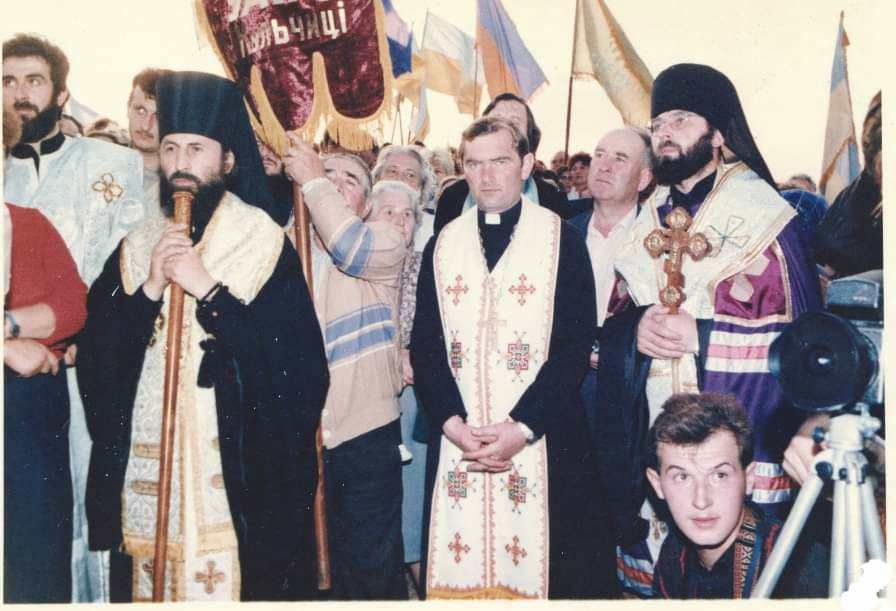
Dialogue as a path to healing and reconciliation
The question of overcoming the crisis in Ukrainian Orthodoxy does not have unambiguous answers and solutions. But it is indisputable that its solution is possible only through dialogue. Not external means of administrative pressure and intervention, but dialogue.
Unfortunately, both in the UOC and in the OCU, everywhere there are forces that marginalise their churches and, guided only by their own jurisdictional-corporate (church-party) interests, seek to maintain confrontation and division. But there are also healthy forces there and there. In spite of everything, there must be dialogue, communication and honest discussion between these healthy forces of both jurisdictions about the issues that divide or unite. There is definitely more that unites than that which divides. It is important that among the clergy and faithful of both OCU and UOC there are many who feel the same way and are opposed to the forceful resolution of disputes. This is indeed a hope that dialogue and unification of Ukrainian Orthodoxy on healthy evangelical principles is possible [33].
It is not normal when Orthodox Ukrainians do not have dialogue, friendly contacts and unity among themselves. The absence of such dialogue for 30 years is one of the consequences of Moscow's interference and influence in Ukrainian ecclesiastical issues.
Dialogue is the only way to improve and achieve the unity of Ukrainian Orthodoxy. This is the way of the Gospel and the Commandments of Christ. There is no other way for Christians, if we are really Christians not only in name. This is the test that all of us now have to pass for conformity to the teachings of the One in whose name we all call ourselves "Christians," regardless of jurisdictional affiliation.
In this regard, the emergence in 2022 of an initiative group for dialogue between UOC and OCU clergy, including representatives of both jurisdictions, was quite encouraging.
There were joint meetings and discussions of the most problematic issues of inter-church relations and life, there were discussions and exchange of different opinions, which were not blocked by jurisdictional officialism and artificial barriers [34]. This is a new phenomenon in the life of Ukrainian Orthodoxy. It is being tried to be marginalised, but hopefully it can still have further development and positive significance in the future [35].
If the hierarchs do not want to voluntarily sit down at a common round table for dialogue and discussion of common problems of Ukrainian Orthodoxy, then life itself creates the conditions for such dialogue "from below", on the part of ordinary priests and believers. This influence must come not only from the “top” but also from the “bottom”. Perhaps it is even for the best, because the role of ordinary clergy and believers in the imperial and Soviet church was unjustifiably levelled. This problem is characteristic of all Ukrainian churches. Here we have a manifestation of the revival of the role of ordinary clergy and believers in the church, so to speak "sobornost from below". This is very important and it should be supported in every way possible.
It is necessary to learn to talk, to shake hands, to look each other in the eyes, to talk honestly about what unites and what separates... Even without moving from one jurisdiction to another, it is possible to look for common ground that unites. At least, at least through independent platforms of round tables and scientific conferences, we should start sitting at the same table together, we should communicate, discuss, look each other in the eye, cooperate, looking for what can unite and reconcile, and not vice versa, what divides and generates distrust and hatred towards each other. This is the format that could gradually melt the ice in the hearts of the clergy and believers of both churches towards each other, becoming the foundation for the future unity of Orthodox Ukrainians [36].
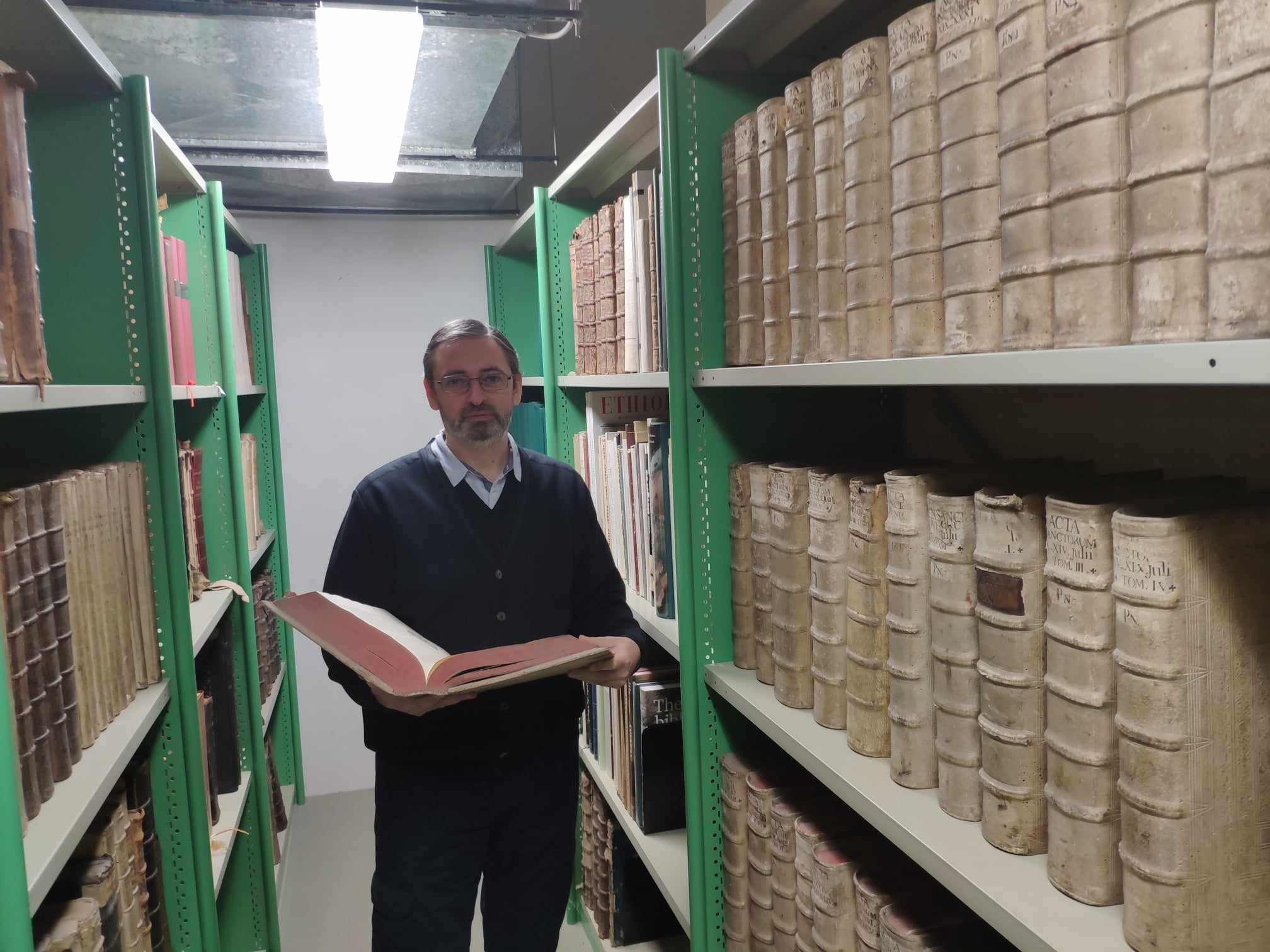
The Problem of the Quality of Theological Education and the Need for Reforms
A significant sign of the crisis in Ukrainian Orthodoxy is the problem of the level and quality of general and theological education of episcopate, pastors and believers, the lack of proper missionary and catechetical and social ministry and much more. This, in turn, affects the level of inter-church relations, generating intolerance and unwillingness to dialogue with opponents. That is, the crisis of Ukrainian Orthodoxy is not only in its external status, but also in its internal state.
According to the Soviet habit, Orthodox educational institutions in Ukraine are primarily oriented, first of all, to educate obedient clerics, rather than free theologians and missionaries. This is also a sign of the Soviet legacy. None of the Orthodox jurisdictions in Ukraine has been able to create its own strong theological school. None of the theological academies (both UOC and OCU) have produced notable world-class theologians in recent years. This significantly distinguishes these institutions from the same Kyiv-Mohyla Academy of the 17th-18th centuries.
The insufficient level of education, sometimes even ignorance and low level of culture among the episcopate and clergy is one of the significant problems. To overcome it, it is useful to borrow the experience of the Ecumenical Patriarchate and other churches (even the UGCC), where candidates for bishop are mainly tried and encouraged to have not only a spiritual education, but also to obtain additional higher education in prestigious Western universities, including a scientific degree (licentiate or doctorate). Such an approach, even at an early stage of the career, helps the future priest or bishop to develop a broad outlook, a modern level of knowledge and culture, helps to reveal his own creative abilities and talents, and to become a personality who will later guide his subordinates and flock in the same way. This is an important safeguard against the ignorance and unculturedness of the episcopate and clergy, which is still taking place in the post-Soviet space. A person who has learnt to think and approaches his work and ministry creatively will appreciate the same abilities in others and will try to form a team of educated and creative people around him. And this provides a qualitatively different level and state of both church ministry and mission, and the activities of the church structures themselves.
Education in Western universities makes Orthodox bishops and clergy integrated into the modern European cultural space. In addition, education and degrees cannot be obtained there by bribery, as is sometimes practised in the clerical educational institutions of post-Soviet countries. This is an important factor that, even at this early stage, shapes other approaches in a person, where, above all, honest labour, personal creative efforts and abilities are valued and rewarded, rather than careerism and sycophant. This also helps to reduce the corruption component in spiritual education and further church ministry. Thus, on the way of reforming church life, the issue of the quality of education (in particular, internships and training in Western universities) is of particular importance. This is exactly how St Peter (Mohyla) started his reforms in the Kyiv Church.
Recently, the OCU has seen encouraging developments in this direction. The Kyiv and Volyn Theological Academies of the OCU are trying to overcome their former state of "self-isolation" and to intensify external cooperation with Greek and other theological educational institutions and research centres [37]. In the future, if such co-operation and exchange of teachers and students is deepened, it could bear positive fruit. Among other things, it would also be an important element of witnessing Ukraine and promoting Ukrainian narratives abroad. However, the work that is being done at the moment seems insufficient. A significant obstacle is the lack of language skills of Ukrainian teachers and students. And the level of theological education in Ukrainian theological schools still needs to be reformed and improved.
Despite all the problems and inconsistencies, in the current crisis Ukrainian Orthodoxy has a unique chance to get rid of the vicious plume of the Soviet legacy. This process of ecclesiastical decommunisation requires both a change of old church elites and a certain upheaval of consciousness. This is extremely difficult and, again, painful. After all, not only signboards, flags, slogans, and personnel need to be changed, but also consciousness, mentality, and education. It is necessary to learn a new attitude to the Church – not as an earthly administrative structure or “parties” (which is characteristic of the Soviet atheistic consciousness), but as a universal spiritual and mystical organism – the Body of Christ, where all Christians are spiritually united, even in spite of outward divisions. We need pastors, missionaries, spiritual guides of the people, not church functionaries and officials who dream of becoming church "landlords" and "feudal lords"(irrespective of the names of the jurisdictions) [38].
I repeat, the quality and modern education of new priestly personnel and the education of the new church elite is very important. The old cadres can no longer be reeducated. But the future of the Church is young people. It is necessary for future priests and bishops to undergo training and internships in Western universities, both secular and theological, not only Orthodox, but also Catholic and Protestant, as it was in the time of St Peter Mohyla.
In this regard, the experience of the Ukrainian Greek Catholic Church (UGCC) and its educational institutions (in particular, the Ukrainian Catholic University) can be very useful as one of the most successful in the post-Soviet space.
It is significant that at one of their meetings the leaders of the OCU and the UGCC declared their intention to develop a kind of road map for co-operation and the search for points of contact that could unite the Christians of Ukraine [39]. First of all, it concerned the sphere of spiritual education and joint scientific and educational projects. Unfortunately, this direction has not yet been pursued by both sides beyond talk. Although it is seen as the most promising.
In particular, within the framework of deepening ecumenical dialogue, it would be useful to develop and implement programs for the exchange of students between Orthodox and Greek Catholic educational institutions, their internship and training in leading Western Orthodox, Catholic and Protestant universities (including the Pontifical Universities, Catholic and Protestant institutes and faculties in Western Europe and America). In addition, it is useful to intensify the holding of joint ecumenical conferences and round tables on various topical problems of history and modernity, to implement joint research and publishing projects, summer theological camps and schools. In this regard, the experience and platform of the Ukrainian Catholic University, the Institute for Ecumenical Studies of the UCU, the research project “Kyiv Christianity”, etc. could be quite useful.
***
Thus, it is necessary to speak not only about the status of autocephaly, but also about overcoming the internal crisis within the Ukrainian churches. The problems of restoring a full-fledged theological school, the quality of spiritual education and enlightenment, missionary and social ministry, openness, ecumenicity, sobornost and evangelism, the role of the community and believers in the Church, overcoming the dangerous formalisation of church life, conformity to the Gospel, turning to the roots of the original Church. These and other answers to current challenges, finding ways to solve them, reforming and filling them with living content - these are the questions that representatives of Ukrainian churches should be concerned with. These issues should be the subject of dialogue and discussion. On such a ground true, not false spiritual unity is possible.
Notes:
- Шумило С. В. Кризис рождения. О Константинополе, советском наследии, старообрядчестве и украинской автокефалии, 07.11.2018 // Релігія в Україні.
- «Гнана» Церква: УПЦ МП збільшилася за рік на 246 парафій // РІСУ
- Сімсот парафій УПЦ МП за три роки перейшли до ПЦУ // Лівий берег.
- ПЦУ налічує 47 єпархій, 77 монастирів і 7000 парафій // Релігія в Україні.
- Quote from Putin's address of 21 February 2022: "Kyiv continues to prepare a massacre of the Ukrainian Orthodox Church of the Moscow Patriarchate. And this is not an emotional assessment, this is evidenced by concrete decisions and documents. The Ukrainian authorities have cynically turned the tragedy of the church split into an instrument of state policy. The current leadership of the country does not respond to the requests of Ukrainian citizens to repeal laws that infringe on the rights of believers. Moreover, the Rada has registered new bills against the clergy and millions of parishioners of the Ukrainian Orthodox Church of the Moscow Patriarchate" (see: Address of the President of the Russian Federation dated 21 February 2022 // Kremlin.ru - the official website of the President of the Russian Federation.
- Shumylo, Serhii. The Russian World of Patriarch Kirill as an apology of anti-Christianity, xenophobia, and violence // Orthodox Times; Shumylo, Serhii. “Orthodox Shahidism” and Moscow Patriarch Kirill’s neo-pagan theology of war // Orthodox Times; Shumylo, Serhii. False “prophecies” as justification for the war: Sectarian hoaxes by Moscow Patriarch Kirill // Orthodox Times.
- "Завдяки Путіну МП в Україні більше не буде, бо не має на це ані морального, ані канонічного права", - Сергій Шумило // РІСУ.
- Statute on the Governance of the Ukrainian Orthodox Church (as amended) of 27.05.2022 // RISU.
- «Украинская Православная Церковь, соединенная через нашу Русскую Православную Церковь с Единой Святой, Соборной и Апостольской Церковью» (п. 1). Визначення про статус УПЦ (1990 р.) // РІСУ.
- Shumylo, Serhii. Moving away from Moscow. Will the UOC choose the path of autocephaly from the ROC-MP? // Fos Fanariou.
- Постанова Собору Української Православної Церкви від 27 травня 2022 року // Офіційний сайт УПЦ.
- Response of the First Deputy Head of the State Service for Ethnic Policy and Freedom of Conscience of Ukraine V. Voynalovych to the request of Dr Serhii Shumylo, no. 69/10.1-99/24 of 04.01.2024.
- Учасники міжправославного діалогу засудили силові методи вирішення конфліктів між громадами // РІСУ; Ініціативна група духовенства і мирян “Десять тез для ПЦУ” засудила силові методи приєднання храмів УПЦ МП до ПЦУ // РІСУ; Чи виграє українське православ'я у війні за храми між ПЦУ та УПЦ МП? // Дзеркало тижня.
- Духовенство і миряни УПЦ МП вимагають від єпископату відповідей на 10 питань щодо статусу їх Церкви та виходу з РПЦ // РІСУ.
- The author of the text of the appeal "10 questions of clergy and believers to the Synod of the UOC" was Dr Serhii Shumylo.
- Shumylo, Serhii. Moving away from Moscow. Will the UOC choose the path of autocephaly from the ROC-MP? // Fos Fanariou.
- Алгоритми захоплення Москвою єпархій УПЦ на тимчасово окупованих територіях // Лівий берег.
- Предстоятель УПЦ прокоментував звинувачення у колаборації священників, які не виїхали з окупованих територій // СПЖ.
- Росіяни закатували священнослужителя ПЦУ на Херсонщині // РІСУ.
- Українське суспільство, держава і церква під час війни. Церковно-релігійна ситуація в Україні-2023 / Уклад. Ю. Якименко (керівник проєкту), А. Биченко, М. Міщенко. Київ: Український центр економічних та політичних досліджень ім. О. Разумкова, 2023. С. 6.
- За останні п'ять років до ПЦУ перейшли 1,5 тисячі парафій з Московського патріархату // Укрінформ.
- Response of the First Deputy Head of the State Service for Ethnic Policy and Freedom of Conscience of Ukraine V. Voynalovych to the request of Dr Serhii Shumylo, no. 69/10.1-99/24 of 04.01.2024.
- Response of the First Deputy Head of the State Service for Ethnic Policy and Freedom of Conscience of Ukraine V. Voynalovych to the request of Dr Serhii Shumylo, no. 69/10.1-99/24 of 04.01.2024.; Звіт про мережу релігійних організацій станом на 01.01.2023, уточнена 27.06.2023 року // ДЕСС.
- Українське суспільство, держава і церква під час війни. Церковно-релігійна ситуація в Україні-2023 / Уклад. Ю. Якименко (керівник проєкту), А. Биченко, М. Міщенко. Київ: Український центр економічних та політичних досліджень ім. О. Разумкова, 2023. С. 21.
- Проект Закону про внесення змін до деяких законів України щодо діяльності в Україні релігійних організацій // Офіційний сайт Верховної Ради України.
- Viktor Yelenskyi: On the Ukrainian Church of the Moscow Patriarchate // Fos Fanariou.; Московський Патріархат є безпосереднім учасником агресії проти України, - голова ДЕСС // РІСУ; Підпорядкування московському патріархату не є частиною православного віровчення – Голова ДЕСС // Офіційний сайт Державної служби України з етнополітики та свободи совісті (ДЕСС).
- Shumylo, Serhii. Is the UOC-MP on the verge of another schism? // Fos Fanariou.
- Приходько Г., свящ. Історичні прецеденти паралельного співіснування двох канонічних східно-християнських юрисдикцій на одній території: приклад церковної організації на території імперії Сасанидів (I–V ст.) // Православ’я в Україні. До 300-річчя з Дня народження прп. Паїсія Величковського та Григорія Сковороди: Збірник статей. – Київ; Кам’янець-Подільський: ТОВ "Друкарня "Рута”", 2022. С. 231–242.
- Хто та як може поставити крапку в церковному розколі в Україні, 10.11.2014 // РІСУ.
- Українське суспільство, держава і церква під час війни. Церковно-релігійна ситуація в Україні-2023 / Уклад. Ю. Якименко (керівник проєкту), А. Биченко, М. Міщенко. Київ: Український центр економічних та політичних досліджень ім. О. Разумкова, 2023. С. 17.
- Ініціативна група духовенства і мирян “Десять тез для ПЦУ” засудила силові методи приєднання храмів УПЦ МП до ПЦУ // РІСУ.
- Чую від людей, як їм останнім часом все більше нудить від "церковних новин" // РІСУ.
- "Those who do not seek dialogue and only accuse are not Christians," - Dr. Serhii Shumylo on Inter-Orthodox relations // RISU.
- У Києві відбулась перша неформальна зустріч духовенства ПЦУ та УПЦ МП // РІСУ; Священнослужителі ПЦУ та УПЦ МП підписали Декларацію порозуміння // РІСУ; Рух за діалог Церков: Духовенство і миряни УПЦ та ПЦУ провели другу зустріч // РІСУ; Учасники міжцерковного діалогу в Софії Київській порадили УПЦ МП та ПЦУ вже розпочати об'єднання // РІСУ; Звернення учасників міжцерковного діалогу в Софії Київській до єпископату, духовенства та вірян Української Православної Церкви і Православної Церкви України, 20 лютого 2023 // Офіційний сайт Державної служби України з етнополітики та свободи совісті.
- "Those who do not seek dialogue and only accuse are not Christians," - Dr. Serhii Shumylo on Inter-Orthodox relations // RISU.
- "Those who do not seek dialogue and only accuse are not Christians," - Dr. Serhii Shumylo on Inter-Orthodox relations // RISU.
- Делегація КПБА відвідала Грецію, де підписала низку угод про співпрацю // Pomisna.info – офіційний сайт ПЦУ.
- Шумило С. В. Кризис рождения. О Константинополе, советском наследии, старообрядчестве и украинской автокефалии, 07.11.2018 // Релігія в Україні.
- Предстоятелі ПЦУ та УГКЦ домовилися розробити дорожню карту співпраці // РІСУ.
Dr Serhii SHUMYLO, Ph.D. in History, ThDr., Director of the International Institute of the Athonite Legacy;
Visiting Research Fellow in the Department of Classics, Ancient History, Religion and Theology, University of Exeter (UK);
Research fellow of the Institute of History of Ukraine, National Academy of Sciences of Ukraine;
Associate Professor at the Department of Cultural Studies, National Academy of Managerial Staff of Culture and Arts of the Ministry of Culture of Ukraine; Honored Worker of Ukraine Culture.
The report has been published in French:
Shumylo, Serhii (2024). Crise de l’orthodoxie ukrainienne : tendances, défis et moyens de les surmonter // Les églises et la construction de la paix en Ukraine (Ed. Prof. Antoine Arjakovsky). Paris: L’Harmattan, 2024. P. 47–60.





